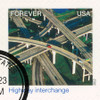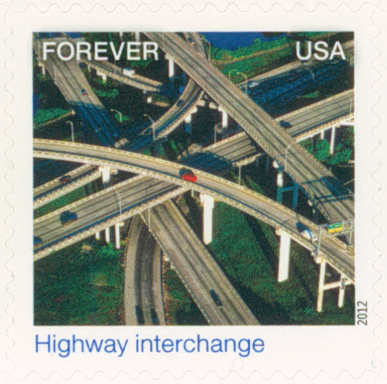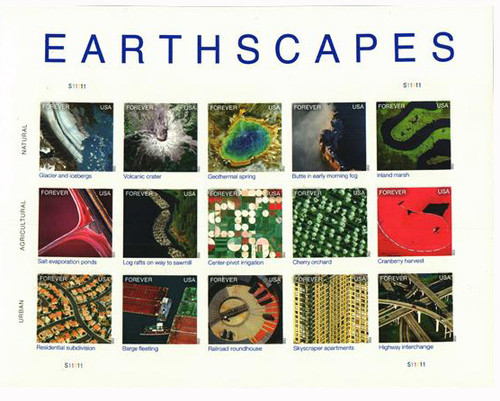
# 4710o - 2012 First-Class Forever Stamp - Earthscapes: Highway Interchange
2012 45¢ Highway Interchange
Earthscapes
City: Washington, DC
First Highway Post Office
In the 1800s, America’s rapid expansion created a need for faster mail transportation. The short-lived Pony Express of 1860-61 made it possible to send messages across the country in just 10 days. Then in 1862, the US introduced its first Railway Post Office (RPO), which sorted mail as the train steamed along.
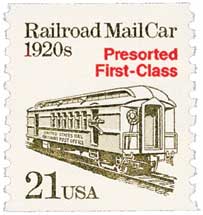
At its height, these RPOs had over 9,000 train routes traveling over 200,000 miles. By the 1940s, highways were stretching across America, and the US Post Office Department began to consider creating Highway Post Offices (HPOs) to provide mail service to areas where there wasn’t passenger train service. HPOs would run in a very similar fashion, except the mail would be transported on a bus rather than a train.
The first HPO entered service on February 10, 1941, traveling 149-miles between Washington, DC and Harrisonburg, Virginia. Two more HPO routes opened later in the year, one between South Bend and Indianapolis, Indiana on May 3, and one between San Francisco and Pacific Grove, California on August 4.
The interior of the HPOs was very similar to that of the RPOs. Each bus could hold about 150 mailbags. Similar to RPOs, the clerks sorted the mail while the bus was in transit. To keep the mail safe, there was a locked gate between the driver (often a hired contractor) and the postal clerks. There were also bars on the windows.
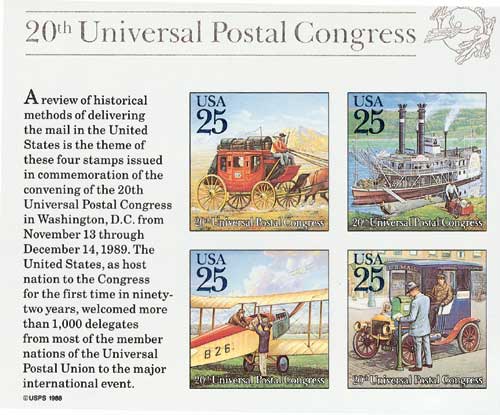
However, working in the HPO was harder on the clerks. While the trains moved at a more steady pace, the buses had to deal with potholes, poor roads, and traffic stops and starts, leading to some bruises for the clerks working in the back.
Though these HPOs proved successful, the Japanese attack on Pearl Harbor at the end of 1941 would dramatically cut funding to the service until after the war. After the war ended, the HPO system was able to expand beginning in 1946. Whenever a new route was created, the Post Office would produce a special “First Trip” cancellation for the mail carried on that day. Throughout the 1950s and 60s, each HPO served about 25 post offices directly plus several others indirectly though Star Route and railway mail.

While the HPOs were initially created to supplement RPOs, expanding highways led to a decrease in passenger train service. Eventually, the railroads closed their routes, so RPO service was replaced by HPO service.
In the 1960s, the Advisory Board of the Post Office Department called for a complete reorganization of the postal system. This led to a new coding system, ZIP codes, sectional centers, and ultimately, the end of the Highway Post Office. The final HPO service ran on June 30, 1974. During its tenure, there were a total of 410 HPO routes across the country.
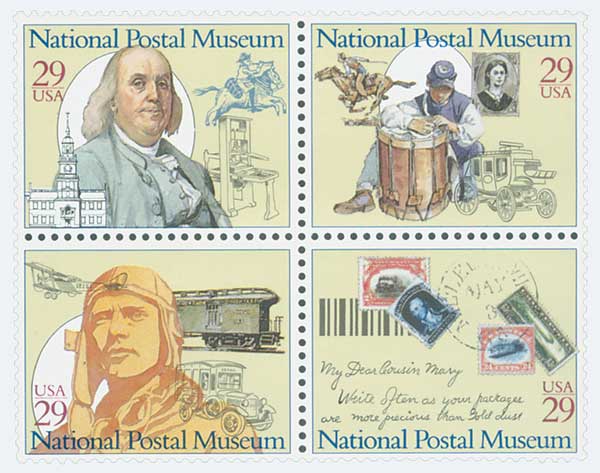
The patriotic red, white, and blue bus used for the first HPO route was decommissioned in the 1960s and hidden by a postal worker in several Post Office garages. It was eventually discovered and purchased by the United Federation of Postal Clerks, who donated it to the Smithsonian who in turn restored it.
2012 45¢ Highway Interchange
Earthscapes
City: Washington, DC
First Highway Post Office
In the 1800s, America’s rapid expansion created a need for faster mail transportation. The short-lived Pony Express of 1860-61 made it possible to send messages across the country in just 10 days. Then in 1862, the US introduced its first Railway Post Office (RPO), which sorted mail as the train steamed along.

At its height, these RPOs had over 9,000 train routes traveling over 200,000 miles. By the 1940s, highways were stretching across America, and the US Post Office Department began to consider creating Highway Post Offices (HPOs) to provide mail service to areas where there wasn’t passenger train service. HPOs would run in a very similar fashion, except the mail would be transported on a bus rather than a train.
The first HPO entered service on February 10, 1941, traveling 149-miles between Washington, DC and Harrisonburg, Virginia. Two more HPO routes opened later in the year, one between South Bend and Indianapolis, Indiana on May 3, and one between San Francisco and Pacific Grove, California on August 4.
The interior of the HPOs was very similar to that of the RPOs. Each bus could hold about 150 mailbags. Similar to RPOs, the clerks sorted the mail while the bus was in transit. To keep the mail safe, there was a locked gate between the driver (often a hired contractor) and the postal clerks. There were also bars on the windows.

However, working in the HPO was harder on the clerks. While the trains moved at a more steady pace, the buses had to deal with potholes, poor roads, and traffic stops and starts, leading to some bruises for the clerks working in the back.
Though these HPOs proved successful, the Japanese attack on Pearl Harbor at the end of 1941 would dramatically cut funding to the service until after the war. After the war ended, the HPO system was able to expand beginning in 1946. Whenever a new route was created, the Post Office would produce a special “First Trip” cancellation for the mail carried on that day. Throughout the 1950s and 60s, each HPO served about 25 post offices directly plus several others indirectly though Star Route and railway mail.

While the HPOs were initially created to supplement RPOs, expanding highways led to a decrease in passenger train service. Eventually, the railroads closed their routes, so RPO service was replaced by HPO service.
In the 1960s, the Advisory Board of the Post Office Department called for a complete reorganization of the postal system. This led to a new coding system, ZIP codes, sectional centers, and ultimately, the end of the Highway Post Office. The final HPO service ran on June 30, 1974. During its tenure, there were a total of 410 HPO routes across the country.

The patriotic red, white, and blue bus used for the first HPO route was decommissioned in the 1960s and hidden by a postal worker in several Post Office garages. It was eventually discovered and purchased by the United Federation of Postal Clerks, who donated it to the Smithsonian who in turn restored it.




